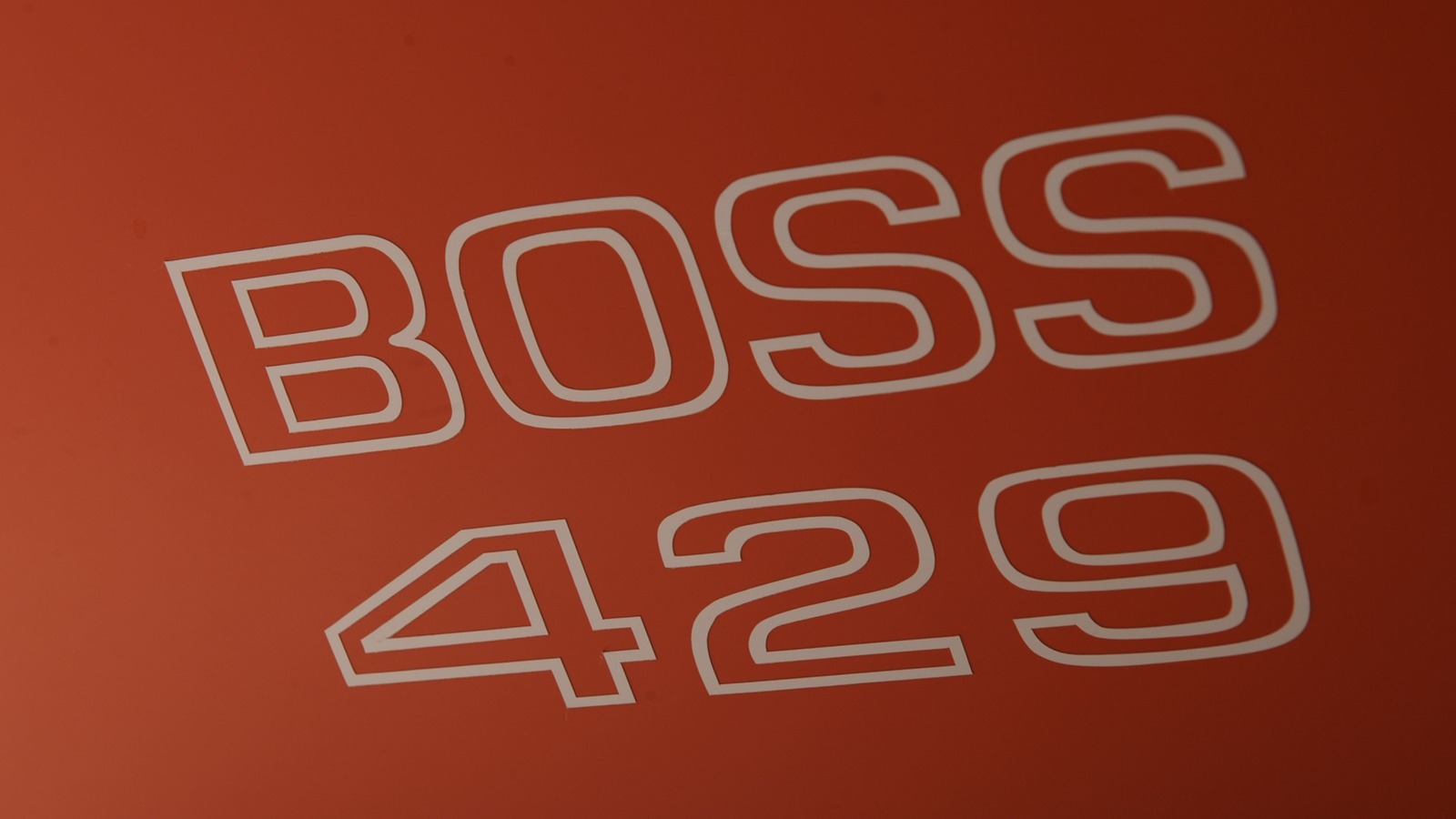
Ford created the Boss 429 to compete with Chrysler’s 426 HEMI, but putting the gigantic engine into a Mustang engine bay provided unique challenges. Ford designated select Sports Roof (Fastback) 1969 Mustangs on the assembly line to receive the Boss 429 engine. As such, it would receive the Boss option package, which deleted the engine but added Boss 429 fender decals, a functional manually-operated hood scoop, a front spoiler, dual exterior mirrors, an engine oil cooler, trunk-located battery, power steering, power front disc brakes, close-ratio four-speed manual transmission, 3.91:1 limited-slip rear differential, ¾-inch rear sway bar, black deluxe interior, an 8,000-rpm tachometer, and AM/FM radio, according to Supercars. The 1969 Mustang Boss 429 offered a choice of five exterior colors: Raven Black, Wimbledon White, Royal Maroon, Candyapple Red, and Black Jade.
After the semi-completed 1969 Mustang Boss 429 chassis rolled off the line, it was shipped to Ford’s racecar shop, Kar Kraft, for extensive modification. Kar Kraft fabricators cut and relocated the stock Mustang’s front shock towers, various suspension parts, and the car’s firewall to make room for the Boss 429. The modification required using a smaller brake booster, and air conditioning wasn’t even offered as an option.
While winning races was the driving force behind the Boss 429 engine, it only received a 375 horsepower rating in the Mustang. For the big-bore engine to live up to its full potential, it needed airflow into the cylinders and out of the exhaust. Although expanded by Kar Kraft, the 1969 Mustang engine bay’s small dimensions required a restrictive intake manifold and exhaust headers.

